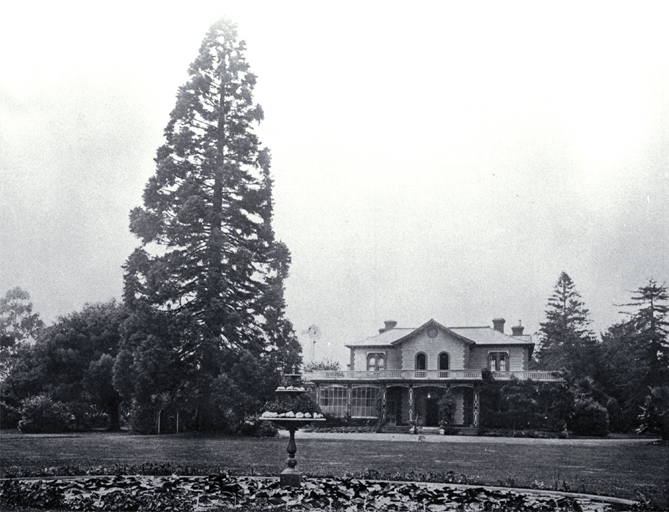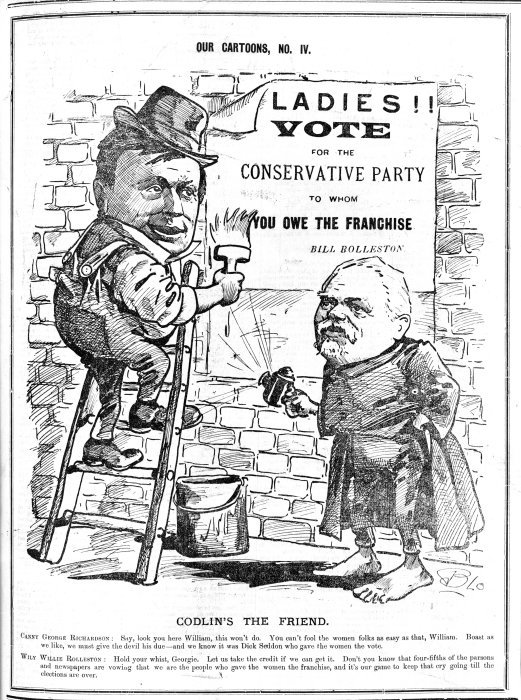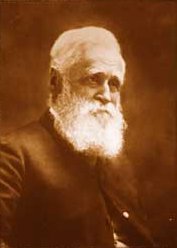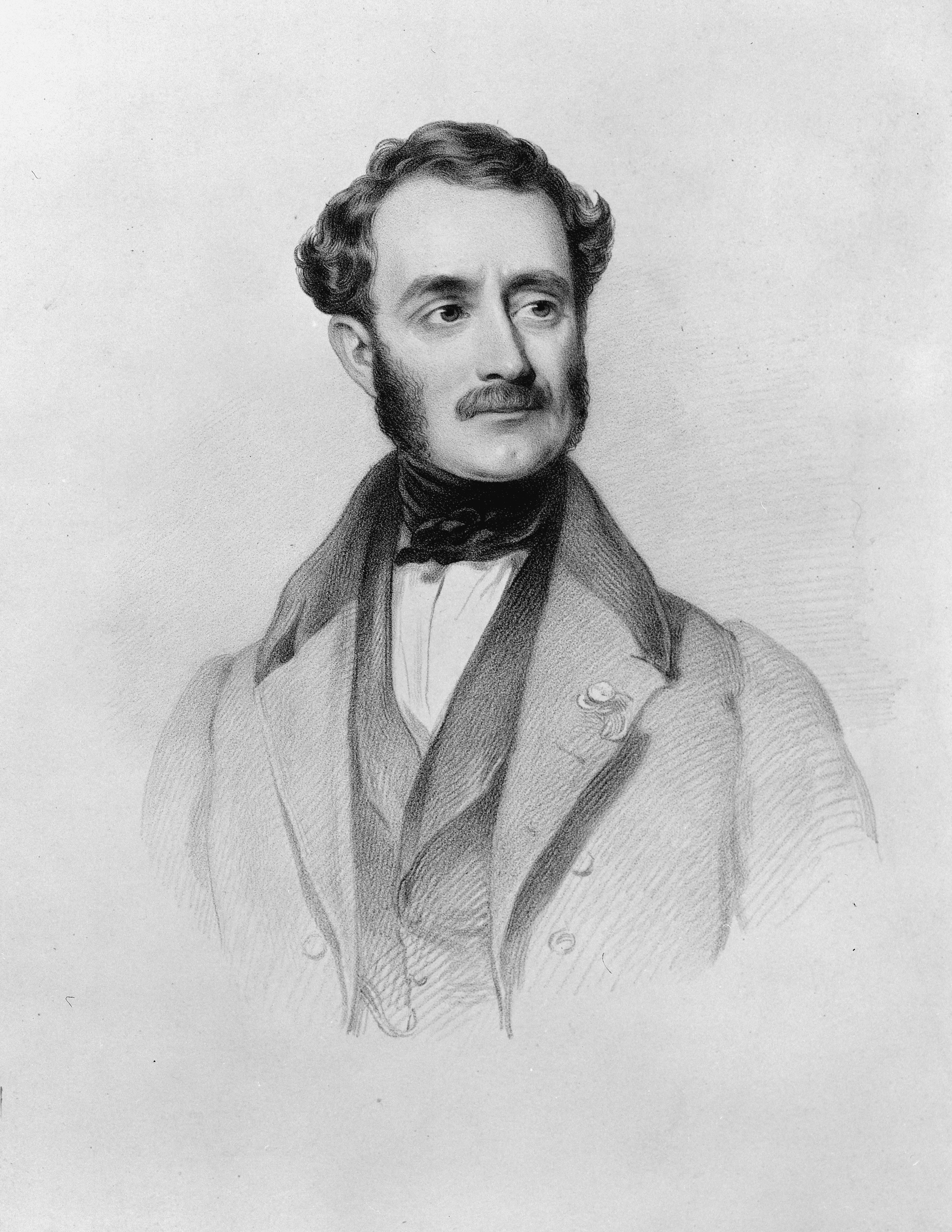|
John Thomas Peacock
John Thomas Peacock MLC JP (1827 – 20 October 1905) was a New Zealand businessman, philanthropist and politician. He came to Canterbury in 1844, several years before organised settlement started. Early life Peacock was born in 1827 in the Hawkesbury district, New South Wales, Australia. He is the eldest son of John Jenkins Peacock (d. 1866) and his wife Maria Peacock (1804/05–1884). He attended Sydney College. The family arrived in Lyttelton in 1844. Settlement organised by the Canterbury Association started in December 1850, so the Peacocks were in the colony at an early stage. His father was a hard worker. It is said about him that "he could be seen at Lyttelton ... at 6 am on a frosty morning, knee deep in the water loading a boat with sacks of potatoes for shipment by his brig which lay at anchor some distance away." In August 1854, Peacock married Kate Hickman Peacock (née Mansfield, born ca 1835). They did not have any children, but adopted Janey, the ex-nup ... [...More Info...] [...Related Items...] OR: [Wikipedia] [Google] [Baidu] |
The Honourable
''The Honourable'' (British English) or ''The Honorable'' (American English; see spelling differences) (abbreviation: ''Hon.'', ''Hon'ble'', or variations) is an honorific style that is used as a prefix before the names or titles of certain people, usually with official governmental or diplomatic positions. Use by governments International diplomacy In international diplomatic relations, representatives of foreign states are often styled as ''The Honourable''. Deputy chiefs of mission, , consuls-general and consuls are always given the style. All heads of consular posts, whether they are honorary or career postholders, are accorded the style according to the State Department of the United States. However, the style ''Excellency'' instead of ''The Honourable'' is used for ambassadors and high commissioners. Africa The Congo In the Democratic Republic of the Congo, the prefix 'Honourable' or 'Hon.' is used for members of both chambers of the Parliament of the Democratic Repu ... [...More Info...] [...Related Items...] OR: [Wikipedia] [Google] [Baidu] |
Christchurch City Libraries
Christchurch City Libraries is operated by the Christchurch City Council and is a network of 21 libraries and a mobile book bus. Following the 2011 Christchurch earthquake the previous Christchurch Central Library building was demolished, and was replaced by a new central library building in Cathedral Square, ''Tūranga'', which opened in 2018. Early history The library began as the Mechanics' Institute in 1859, when 100 subscribers leased temporary premises in the then Town Hall. The collection consisted of a few hundred books. By 1863, with the help of a grant from the Provincial Government, the Mechanics' Institute opened a building on a half-acre of freehold land on the corner of Cambridge Terrace and Hereford Street, purchased the year before at a cost of £262.10.0. This site was to remain the home of the library until 1982. Debt, dwindling subscribers and other problems forced the institute to hand over the building to the Provincial Government in 1873. By this time t ... [...More Info...] [...Related Items...] OR: [Wikipedia] [Google] [Baidu] |
Lyttelton Harbour Board
The Lyttelton Harbour Board was established on 10 January 1877 to manage Lyttelton Harbour. The harbour had previously been managed by the Canterbury Provincial Council, but provincial government ceased to exist on 1 January 1877. The harbour board was governed by members elected during Local elections in New Zealand, local elections. Lyttelton Harbour Board was disestablished through the 1989 local government reforms, with its functions transferred to the Lyttelton Port Company. The Lyttelton Harbour Board held its first meeting on 18 January 1877. The ten inaugural members were Edward Richardson, John Hall (New Zealand politician), John Hall, Hugh Murray-Aynsley, Peter Cunningham, Richard James Strachan Harman, David Craig, John Anderson (mayor), John Anderson, Edward George Wright, Henry Sawtell, and John T. Rouse. Richardson was unanimously elected as the inaugural chairman. The table below shows the original membership of the harbour board: Cunningham resigned in late 1877 ... [...More Info...] [...Related Items...] OR: [Wikipedia] [Google] [Baidu] |
The Star (Christchurch)
''The Star'' is a newspaper published in Christchurch, New Zealand. It was published daily from 1868 to 1991. It became the ''Christchurch Star-Sun'' in June 1935 after merging with a rival newspaper, ''The Sun'', and at the time it ceased daily publication in 1991 it was known as ''The Christchurch Star''. It later became a free newspaper, published twice a week (on Wednesdays and Fridays) until 2016, then once a week (on Thursdays) since 2016. History The ''Star'' was first published on 14 May 1868 as the evening edition of the ''Lyttelton Times''. In April 2013 the ''Star'' was sold by APN New Zealand Media (owners of ''The New Zealand Herald'') to Mainland Media. Mainland Media was owned by Pier and Charlotte Smulders, and chaired by Nick Smith, the director of the Dunedin–based media company Allied Press. Smith had previously worked as an advertising cadet for ''The Star'' in 1965. In August 2018, Allied Press acquired ''The Star'' owners Star Media and its s ... [...More Info...] [...Related Items...] OR: [Wikipedia] [Google] [Baidu] |
St Albans, New Zealand
St Albans is a large, inner-northern suburb of Christchurch, New Zealand, located directly north of the Christchurch Central Business District. It is the second largest suburb in the city by population (behind Halswell), with a population of 13,137 at the 2018 Census. The suburb falls within the Christchurch Central electorate and is represented by Duncan Webb, who has been the member of parliament since the 2017 general election. St Albans is one of the most diverse residential neighbourhoods in Christchurch, with a wide range of densities, architectural styles and housing ages throughout the suburb. It has everything from run-down high-density council-owned flats, to modern luxurious high-density flats and apartments; old mid-density workers cottages through to large low-density estates of various ages. History Originally a working-class settlement, St Albans was a separate borough from 1881 until 1903 when it became part of Christchurch City. St Albans was named after Georg ... [...More Info...] [...Related Items...] OR: [Wikipedia] [Google] [Baidu] |
William Rolleston
William Rolleston (19 September 1831 – 8 February 1903) was a New Zealand politician, public administrator, educationalist and Canterbury provincial superintendent. Early life Rolleston was born on 19 September 1831 at Maltby, Yorkshire as the 9th child of the Rev. George Rolleston and Anne Nettleship. His brother was the physician and zoologist George Rolleston. He attended Rossall School and Emmanuel College, where he graduated in 1855 with second class honours in the classical tripos. He had intended to move to Canterbury but his father advised against it so he took up tutoring. However, this was merely a means of raising enough money to leave England in order to reject 'Conservatives and Ecclesiastics'. Political career Rolleston first joined the Canterbury Provincial Council when he was appointed to the Canterbury Executive Council on 4 December 1863. His tenure on the Executive Council finished on 16 June 1865. On 23 January 1864, he was elected as a provincial counci ... [...More Info...] [...Related Items...] OR: [Wikipedia] [Google] [Baidu] |
Canterbury Provincial Council
The Canterbury Province was a province of New Zealand from 1853 until the abolition of provincial government in 1876. Its capital was Christchurch. History Canterbury was founded in December 1850 by the Canterbury Association of influential Englishmen associated with the Church of England. (An attempt was initially made to restrict residence in the province to members of the church but this was abandoned.) The ''Charlotte Jane'' and the '' Randolph''—the first two of the First Four Ships—arrived in the area on 16 December 1850, later celebrated as the province's Anniversary Day. In 1852, the Parliament of the United Kingdom passed the New Zealand Constitution Act 1852, which amongst other things established provincial councils. The Constitution contained specific provisions for the Canterbury Association; the first being that the new General Assembly (New Zealand Parliament) could not amend the legislation establishing the Canterbury Association, the second being that the C ... [...More Info...] [...Related Items...] OR: [Wikipedia] [Google] [Baidu] |
1871 New Zealand General Election
The 1871 New Zealand general election was held between 14 January and 23 February to elect 78 MPs across 72 electorates to the fifth session of the New Zealand Parliament. 41,527 electors were registered. Background 1871 was the first general election to include the four Māori electorates, with elections held on 1 and 15 February. The first Māori Members of Parliament had been elected in 1868, but in 1871 three retired and one (Western Maori) was defeated. So in 1871 four new Māori MPs were elected. In 1866 the secret ballot was introduced for general (European) elections. The 1871 general election was the first one at which it was used. The secret ballot not used in Māori electorates until 1938, thus Māori voters continued to inform a polling officer orally of their chosen candidate. The date of election is defined here as the day on which the poll took place, or if there was no contest, the day of nomination. The earliest election day was 14 January 1871. The earliest da ... [...More Info...] [...Related Items...] OR: [Wikipedia] [Google] [Baidu] |
Christchurch Central City
Christchurch Central City or Christchurch City Centre is the geographical centre and the heart of Christchurch, New Zealand. It is defined as the area within the Four Avenues (Bealey Avenue, Fitzgerald Avenue, Moorhouse Avenue and Deans Avenue) and thus includes the densely built up central city, some less dense surrounding areas of residential, educational and industrial usage, and green space including Hagley Park, the Christchurch Botanic Gardens and the Barbadoes Street Cemetery. It suffered heavy damage in the 2010 Canterbury earthquake and was devastated in the 2011 Christchurch earthquake. Following this second earthquake, the Central City Red Zone The Central City Red Zone, also known as the CBD Red Zone, was a public exclusion zone in the Christchurch Central City implemented after the 22 February 2011 Christchurch earthquake. After February 2013, it was officially renamed the CBD Rebuil ... was set up and, with a gradually shrinking area, remained inaccessible ... [...More Info...] [...Related Items...] OR: [Wikipedia] [Google] [Baidu] |
The Press
''The Press'' is a daily newspaper published in Christchurch, New Zealand owned by media business Stuff Ltd. First published in 1861, the newspaper is the largest circulating daily in the South Island and publishes Monday to Saturday. One community newspaper—''Northern Outlook''- is also published by ''The Press'' and is free. The newspaper has won the title of New Zealand Newspaper of the Year (in its circulation category) three times: in 2006, 2007 and 2012. It has also won the overall Newspaper of the Year title twice: in 2006 and 2007. History James FitzGerald came to Lyttelton on the ''Charlotte Jane'' in December 1850, and was from January 1851 the first editor of the ''Lyttelton Times'', Canterbury's first newspaper. From 1853, he focussed on politics and withdrew from the ''Lyttelton Times''. After several years in England, he returned to Canterbury concerned about the proposed capital works programme of the provincial government, with his chief concern the pro ... [...More Info...] [...Related Items...] OR: [Wikipedia] [Google] [Baidu] |
New Zealand Shipping Company
The New Zealand Shipping Company (NZSC) was a shipping company whose ships ran passenger and cargo services between Great Britain and New Zealand between 1873 and 1973. A group of Christchurch businessmen founded the company in 1873, similar groups formed in the other main centres, to counter the dominance of the Shaw Savill line controlled from London and the (Scotland-Dunedin) Albion line. There were seven initial directors: John Coster, chairman, George Gould Snr., (father of George Gould), John Thomas Peacock, William Reeves, Robert Heaton Rhodes, John Anderson, and Reginald Cobb (died 1873) representing the New Zealand Loan & Mercantile Agency. The similar groups of businessmen in Dunedin and Wellington soon joined this Christchurch company followed by the Auckland group. They completed the four-main-centre link in July 1873. Hon. John Johnston Wellington, John Logan Campbell Auckland, and Evan Prosser of Dunedin were elected to the main board. [...More Info...] [...Related Items...] OR: [Wikipedia] [Google] [Baidu] |
Samuel Farr (architect)
Samuel Charles Farr (1827 – 14 July 1918) was a 19th-century builder and architect in Christchurch, New Zealand. He intended to emigrate from England to Auckland, but significant shipping problems saw him end up in Akaroa in 1850 instead. From 1862, he lived in Christchurch. Farr has a number of firsts against his name: the first marriage in Canterbury, he designed Akaroa's first church, designed New Zealand's first iron verandahs, and he started Sunday schools in Canterbury. As a leading member of the Acclimatisation Society, he stocked almost every lake and river in Canterbury with fish and was instrumental in introducing the bumblebee to New Zealand. His most notable building was Cranmer Court, the former Normal School, in the Christchurch Central City; this building was demolished following the February 2011 Christchurch earthquake. Early life Farr was born in Baldock, North Hertfordshire, England, in 1827. He was the son of a builder and was exposed to architecture through ... [...More Info...] [...Related Items...] OR: [Wikipedia] [Google] [Baidu] |








